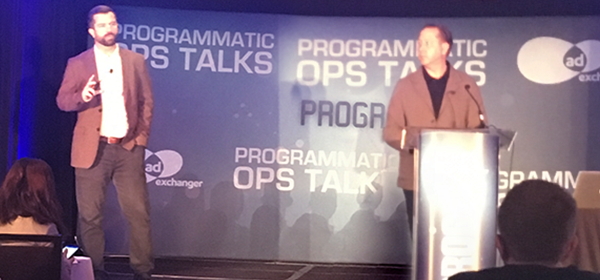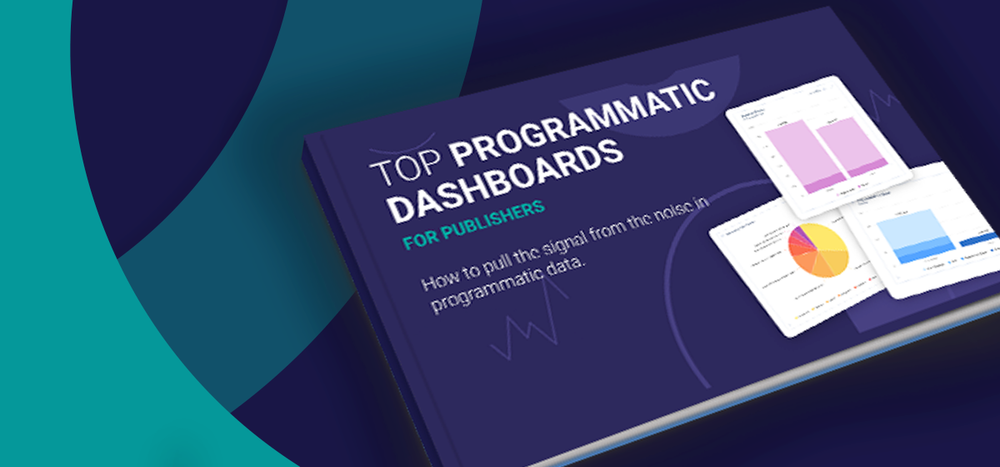An Interview with Ad-Juster’s Expert Presenters
Ad-Juster’s Marketing and Technical Writer Andrew Rossillo interviewed three Ad-Juster masterminds who presented at Programmatic I/O San Francisco on April 4th and 5th: Chief Marketing and Business Development Officer Dan Lawton, Chief Technology Officer Matt Essenburg, and Product Manager Calson Lee. Here’s what was pulled out of those ad-tastic brains at the conference.
Andrew: I know you’re all busy saving the digital advertising universe, so I really appreciate you taking the time to answer a few questions. To start, what was the overall mood and energy like at the conference?
Dan: I find it interesting that programmatic touches the entire digital advertising ecosphere. Brands, agencies, ad tech vendors, ad networks, and publishers were all in attendance to learn about how they fit, how to partner, and how to maximize ROI in the programmatic space. There is a thirst for information to make sure they’re not left behind in the transformation of the entire industry.
Matt: Lively! Record crowds this year with more event tracks than previous years. There is quite a buzz around programmatic and the data services involved.
Calson: There’s a lot of excitement in the industry as more and more emphasis is being placed on making informed decisions based on data. Programmatic will continue to improve and grow in importance the more the industry focuses on making good data-driven decisions.
Andrew: You presented on “Why Mapping and Normalization Matter for Programmatic Reporting.” In your presentation, you discussed how publishers, agencies, and ad tech platforms are all tasked with gathering, organizing, and delivering data for a multitude of use cases. Ad-Juster has built exclusive mapping and normalization technology that our clients use to report and reconcile 1.5 trillion impressions and over a billion dollars per month. Can you briefly outline one or two of these use cases?
Dan: The key to programmatic reporting is data automation in a non-standard data environment. Otherwise, each reporting use case is customized and requires constant ongoing normalization and rebuilding for new use cases. Until the launch of Ad-Juster’s Programmatic Data Management tool, all reporting solutions required arduous high-touch customization. For the first time, programmatic data can be set up and producing usable results in a matter of days instead of months. Our unique normalization technology gathers, unifies, transforms, standardizes, and reports data with visualizations right out of the box.
Matt: Normalizing across advertiser and device type for revenue is one of the top use cases helping businesses. Determining what device or site to target based on revenue and unique demand is key.
Calson: In an industry crowded with various ad partner platforms with scattered data values, teams are unable to quickly answer seemingly easy questions. Programmatic has been helping the industry feel a little less crowded by providing much needed answers. An example of an important use case is programmatic’s ability to identify which buyers exist on each SSP platform, breaking down the idea of unique demand in an objective way.
Andrew: Do businesses need to do anything to prepare for integrating programmatic operations? Or can they jump right in?
Dan: There is planning required, including how to coordinate with sales, what inventory should be made available, how will first-party data add value to audience data, what quality assurance and controls are required for good user experiences, and which partners will provide the best fit. Reporting is typically the last step in the execution, representing more of a reaction to the data coming in after launch rather than a preplanned step.
Calson: Ad-Juster’s Programmatic Data Management tool is designed to let organizations start using it right away. Still, there are things they can do to speed up the onboarding process. For example, they can expedite the process by coming into the tool having already established the datasets critical to their operations, which will help them quickly pinpoint what they need normalized before they even begin. Also, be sure to have your entire team use the tool together for optimal transparency, collaboration, and efficiency to make sure your programmatic objectives are aligned and you’re all equally benefitting from the data.
Andrew: What were the top takeaways for conference attendees? Do you foresee challenges for attendees implementing those takeaways?
Dan: As for our talk, I think the challenge will be to continually educate the industry on the importance of normalization. We know publishers intimately, but we need to better understand the use case needs of brands, ad tech vendors, ad networks, and agencies. We were validated in that they do indeed have reporting pains. Moving forward, we need to continue having open conversations and needs analyses to truly hone in on how we can provide more comprehensive and fine-tuned service for brands and agencies. We didn’t get to where we are now by listening to only ourselves. We encourage current customers and even companies we’ve never talked with to discuss their pains and needs. After all, Ad-Juster solutions help the entire industry, so this really is for-the-good-of-the-whole type stuff.
Calson: There was definitely a lot of interest in our programmatic demonstrations, which lead to questions regarding header-bidding reporting, including best practices for picking the best partners. Programmatic is really powerful, which also means it can be a little intimidating at first. It can take a little getting used to during initial implementation, but exponentially worth the effort.
Andrew: Do revenue operations professionals have reservations about programmatic marketing and reporting?
Dan: Sure they do. They also know they need to eat their broccoli. The reservation comes from the reporting complexities of monetizing and optimizing yield. What are our KPIs? Who needs to see the reports? How do we build a process to get consistently accurate reports? Do we insource or outsource reporting? What is our budget? Sometimes it just comes down to taking that first bite of broccoli to realize it’s essentially just the smell that’s funky…made all the more palatable when dressed with the right support and service.
Calson: RevOps has a huge need to implement a solution to aggregate programmatic revenue sources. What’s interesting is that because it’s such a major need, RevOps is sometimes hesitant in getting started, not wanting to disrupt their current operations. But would you rather have a business performing the status quo at a medium degree of success or some initial growing pains that lead to big success? RevOps simply need the tools for enhanced data-driven decisions. Programmatic is the answer.
Andrew: Aside from the fact that you unknowingly wore the same jackets on stage, what was the funniest thing you experienced at the conference?
Dan: Mario from Eyeview video marketing kidded with me that I need to take a molly before I speak next time…be ready for a group dance at the next conference.
Matt: Little known fact, the jackets were different—the lighting caused an illusion. Regardless of illusions, I did have a blast presenting with Dan. It’s great always being surrounded by people with genuine passion for what they do. And it was especially nice being able to meet new and familiar faces during the cocktail hour. It’s never about one-and-done business with Ad-Juster. I look forward to the ongoing relationships we’ve been building.
Andrew: Do you have any forecasts for primary topics, what’ll be presented at next year’s Programmatic I/O? What does the future hold for digital advertising?
Dan: I think an important topic will be how to distribute programmatic data across the entire organization. Currently, programmatic data is siloed in RevOps. It needs to be distributed across sales, finance, marketing, IT, and executives. This type of data can fuel an entire business.
Matt: Video and transparency in the marketplace. There also seems to be a lot of specific audience data that needs an outlet to be successful. We’ll also see consolidation across the vendor space throughout 2017.
Calson: There are a lot of video players out there, which prevent programmatic video from being successful. I’d love for more developments in that space.






